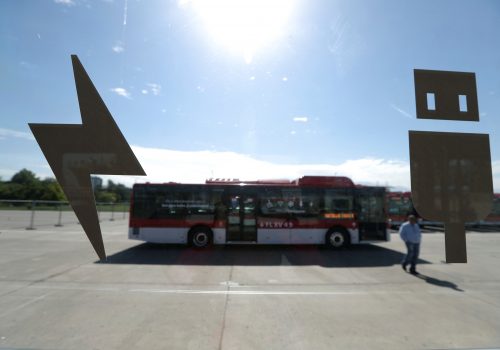The new airminded: Civil aviation’s post-pandemic transformation

Aviation’s future: This is not just a recovery, it’s a transformation
As the world struggles to emerge from the depths of the COVID-19 pandemic wave, it is evident that air transport will experience a steady rebound as leisure travelers eagerly reschedule deferred family and tourist travel, while business travelers realize that not every deal can be closed via videoconferencing. The exact timing of the rebound will be gated primarily by the rate at which new COVID-19 variants and infection rates are brought under control. In the meantime, however, look for steady increases in both domestic travel and travel within regions where infection rates are brought under control and reciprocal arrangements are in place.
The International Air Transport Association (IATA) forecasts an overall return to historic trends by 2024, with international travel lagging slightly behind domestic travel. I am skeptical of the 2024 date but believe the shape of the trend line reflects the most likely scenario: domestic growth will lead international growth as Revenue Passenger Kilometers (RPKs) return to pre-pandemic levels followed by continued global aviation growth.
But this is more than a recovery: expect a profound transformation in the civil aviation ecosystem.
This projected return to historic norms belies a range of profound changes with important geopolitical implications. More specifically, the effects of the pandemic have acted as a powerful forcing function, accelerating some trends already underway, extinguishing other trends, and above all, spurring both technological and commercial innovations all but certain to turn assumptions about the interaction between physical air travel and cyberspace on their head.
The combined cross-impact of these trends will result in a profoundly transformed air transportation environment. We will not just travel more, we will travel differently. And with this will come a profound change in our collective worldview that in turn will affect perceptions of geopolitics. Simply put, we are entering a new age of “airmindedness”—a realization that the world is at once smaller and larger than we imagined: smaller in distance, but larger in diversity and surprise than most have imagined.
“Airminded” was a phrase oft-heard in the early days of aviation a century ago. At once both prophecy and reality, it neatly captured both the passion of early aviation innovators and the public’s expectation of how air travel would transform the world. In this moment of ever-growing desire to travel and innovators creating everything from Jetson-like personal electric vertical takeoff and landing (eVTOL) aircraft to space flight tourism platforms, we have entered a new age of airmindedness in which both device and destination are capturing the public’s imagination.
The immediate future resembles the dawn of 1950s’ jet travel
In terms of overall scale, we are entering a period of transformation comparable to or greater than the transformations that ensued following the advent of jet travel with the DC-8 and Boeing 707 in the 1950s. Like then, we are witnessing a convergence of technical innovations, new business models, growing travel demand, and increased public fascination with the potential of new aviation platforms.
Historically, carriers tended to favor capacity over speed: carrying more passengers per flight translated into both economies of scale in the sky as well as efficient use of limited landing slots and gates at airports. The post-pandemic reality is shifting to a focus on speed, first in the form of shortening trip times with point-to-point routing and then followed by higher air speeds as a means to making more efficient use of landing slots with faster turnarounds. This will be accompanied by an overall reduction in passenger capacity of individual aircraft, particularly as eVTOL “air mobility” offerings begin to arrive.
The most important factors and trends are outlined in this paper, while their geopolitical implications are highlighted below.

Geopolitical implications of an airminded age of aviation transportation
The cross-impact of the foregoing factors raises a host of geopolitical implications. When “airminded” seeped into public consciousness after the flight of the Wright brothers, it triggered no end of utopian expectations that somehow the reality of flight would help usher in a new era of world peace. This expectation was quickly contradicted in the First World War, dispelled by Alexander P. de Seversky, and utterly atom-smashed in the Second World War.
Sadder but wiser after a century of aerospace innovation, it is unlikely that anyone expects the coming aviation transformations to bring peace, but we are unquestionably entering a new airminded era in the sense of unfolding innovations and a consequent public fascination with the ensuing possibilities. Those transformations will most certainly generate no end of surprise beyond that already discussed. In closing, here is a sampling of possibilities offered to provoke further thought.
Post-pandemic tourism: new destinations—or back to the old dysfunction?
Immediately before the pandemic shutdown, tourist hot spots from Venice to the Taj Mahal were being overrun by hordes of plane-borne tourists. Spain’s Santiago de Compostela pilgrimage route risked turning into a 500-kilometer queue as more than 300,000 hikers applied to travel in 2019, and Machu Picchu reportedly was seeing its slopes being eroded and destabilized by the sheer volume of visitors tromping around its ruins. Will post pandemic tourism disperse or return to its old crowded ways?
Accelerating the centrality of cities as geopolitical powers
This is unquestionably the century of the city. World population became majority urban sometime around 2007, and by 2050 it is estimated that two-thirds of the world population will live in cities. Will the projected advances in aviation and 3D urban mobility further concentrate the power of cities, eventually eclipsing national power?
Can international air transport regulations keep up?
IATA is the central governing body for global aviation. The pace of current trends from airport landing slot demand to electric power are challenging IATA’s ability to keep up with events. Failure to do so could result in serious economic and travel disruptions.
Aviation innovation meets resource scarcity
Aviation’s move to electric propulsion will depend heavily on the same scarce rare earths and other mineral resources already in demand for everything from smartphones to electric highway vehicles. Aviation’s share of consumption might prove comparatively smaller than other sectors,
but the high visibility of privileged travelers crossing the sky in rare earth-enabled electrics could prove a public perception nightmare.
Technology-enabled terrorist threats
The combination of electric propulsion and increasing automation has already delivered new risks in the form of inexpensive drones. Basic systems are already being used in smuggling operations and have clear potential as platforms for delivery of everything from explosives to noxious aerosols. As platforms grow in capability, this problem will only become more acute.
Proliferating no-fly and no-go zones
The 2014 downing of MH17 was an ominous harbinger of future aviation conflict hazards. The arrival of free flight will exacerbate this risk, as the departure from defined airways will make it harder for observers on the ground to distinguish bystander, friend, and foe.
Flag protectionism?
As aviation becomes ever more central to economic and political power, there is the potential for the arbitrary blocking of foreign-flagged carriers as an incident to geopolitical competition. This was briefly the case in the late stages of the Brexit debacle, and thus there is precedent for others to contemplate interference with the free flow of air traffic as a geopolitical tool. Such flag-based interference is clearly irrational given the vulnerability from retaliatory action, but there is no shortage of instances where international players have chosen options that while irrational in the long term, satisfy narrow short-term goals.
Rise of the new global citizen (or is it the global nomad?)
From the moment our distant ancestors first learned to ride a horse or build a raft, the single greatest impact of transportation systems has been to unlock humans from the tyranny of place. The combination of the steady advance of cyberspace with the aviation innovations on the horizon will kick this unlocking into overdrive and in the process create a new kind of global citizen. This will not be the global citizen envisioned by 1970s Earth Day activists or visionaries like Buckminster Fuller and Marshall McLuhan. The first wave of the new global citizens are the super-wealthy who, thanks to their wealth and convenient access to cyberspace and air transportation, can live and work from wherever they please.
Behind this first wave are the merely wealthy and the upper middle class. Just as the arrival of jet travel in the late 1950s created a new kind of global tourist, our new aviation systems will create a new global nomadic class. Almost-retirees will move from Los Angeles to run their online business from a Central American beach town, while others snap up real estate in depopulated Italian hill towns, creating new foreign enclaves in the Old World.
We can barely glimpse the implications of a world in which millions of wealthy nomads can move on a whim from destination to destination, never quite putting down roots, flying high in comfort over the hundreds of millions more who remain chained by economics and circumstance to a particular place. The obvious tip of the iceberg includes acceleration of the continuing demise of the nation-state as a meaningful political unit, new social frictions as the arrival of wealthy and footloose strangers disrupts local economies. And, of course, this new mobility will open vast new opportunities for tax evasion and trans-border crime. Watch this space for a deeper examination of this critical trend.
Accelerating the decline of the fading nation-state order?
This aviation transformation creates as many challenges as opportunities for sovereign states—and in the case of fragile or failing states, the challenges seem to far outweigh the benefits. Specific issues include the inability to create and maintain formally designated landing sites attractive to commercial enterprises, coupled with the inability to control cross-border air traffic, thus complicating attempts to control borders and detect illicit activity. The result will be a perceived (and in many instances, actual) loss of territorial control that will force entities to ineffectually enforce their sovereignty, creating new uncertainties around air travel in specific regions.
The end of airspace as a global commons?
Airspace today is a de facto global commons supported by a host of international treaties underpinned by customary practice. The increase in both volume and variety of aviation platforms is certain to disrupt the existing order, triggering new uncertainties and a likely massive renegotiation of existing arrangements.
This happened with considerable success following the launch of Sputnik 1 in 1957. In contrast, the issue of renegotiating a commons arrived again in the form of the United Nations Convention on the Law of the Sea (UNCLOS) process beginning in the 1970s, and the result was at best a misfire. I hope for an optimistic result but fear the future will be more UNCLOS than Sputnik.

Read the full report
Related content

The Scowcroft Center for Strategy and Security works to develop sustainable, nonpartisan strategies to address the most important security challenges facing the United States and the world.
Acknowledgements1Aviation’s future: Icon made by Freepik from www.flaticon.com; Geopolitical implications of an airminded age of transformation: Icon made by Freepik from www.flaticon.com; Read the full report: Icon made by Good Ware from www.flaticon.com;


